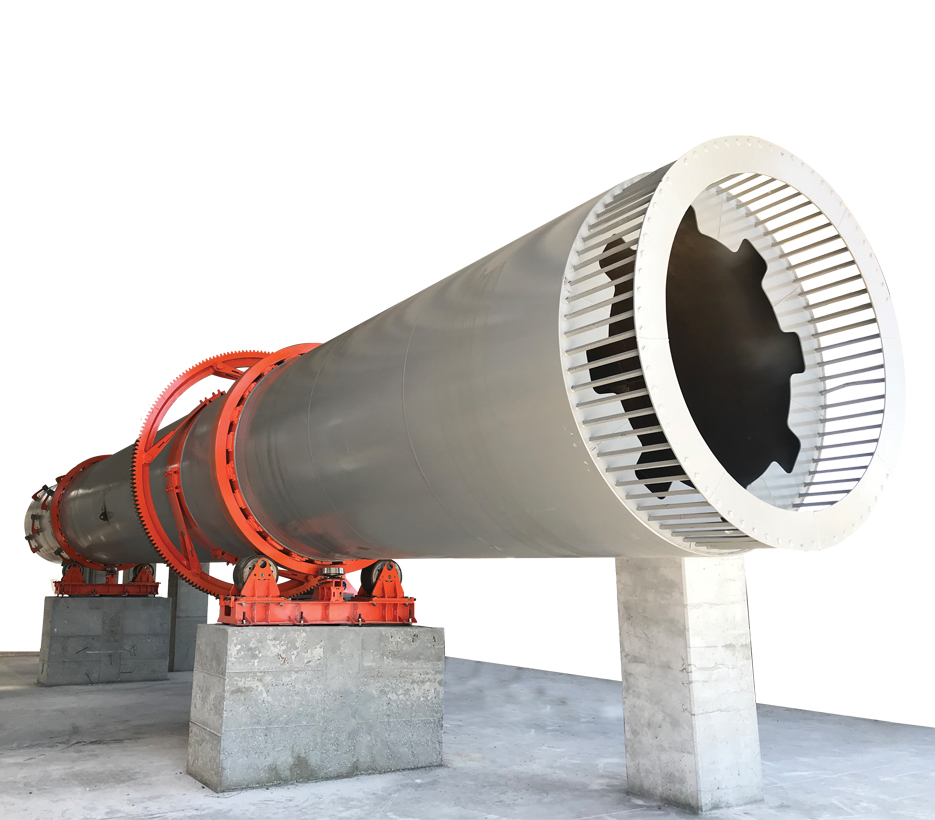DRYING DRUM
Concurrent Drying Drum Technology and Features
Concurrent Drying Drums are designed to reduce the moisture content of materials, protect and in some cases increase the moisture content of materials. This drying method ensures processing with minimal energy usage, without any loss or deterioration of the materials. Iso-directional drying drums, which are especially preferred for drying heat-sensitive materials, are a system in which hot air and moist material move in the same direction.
Advantages of Co-Directional Drying Drum:
1- High Temperature Capacity
Co-directional drying system allows the air temperature entering the dryer to rise up to 537°C. These high temperatures can dry the material without damage and remove moisture effectively.
2- Material Temperature Control
As the material moves through the drum, it remains at an average temperature of around 93°C. This helps maintain the thermal sensitivity of the material and prevent overheating problems.
3- Energy Efficiency
Co-directional dryers help reduce energy costs thanks to the effective use of thermal energy. It provides energy efficiency by minimizing heat loss and working in harmony with heat recovery systems.
4- Sufficient Thermal Difference
It is important to provide sufficient thermal difference for the water to evaporate during the drying process and to remove moisture from the material at the desired level.
Drying Drum Design:
It is important to have sufficient waiting time in the design of the drying drum to ensure the transfer of moisture in the material without damaging the air flow. Additionally, the expected heat transfer coefficients for a logarithmic mean temperature difference per cubic meter of drum volume per hour in a direct single-shell isotropic drying drum can range from 30 to 35 BTUs. These types of dryers are specifically designed to ensure that granular particles do not break down and that no condensation occurs in the drying equipment. Co-directional drying drums are ideal for processing sensitive materials such as chemical fertilizers and provide energy efficiency.
Concurrent Drying Drums are designed to reduce the moisture content of materials, protect and in some cases increase the moisture content of materials. This drying method ensures processing with minimal energy usage, without any loss or deterioration of the materials. Iso-directional drying drums, which are especially preferred for drying heat-sensitive materials, are a system in which hot air and moist material move in the same direction.
Advantages of Co-Directional Drying Drum:
1- High Temperature Capacity
Co-directional drying system allows the air temperature entering the dryer to rise up to 537°C. These high temperatures can dry the material without damage and remove moisture effectively.
2- Material Temperature Control
As the material moves through the drum, it remains at an average temperature of around 93°C. This helps maintain the thermal sensitivity of the material and prevent overheating problems.
3- Energy Efficiency
Co-directional dryers help reduce energy costs thanks to the effective use of thermal energy. It provides energy efficiency by minimizing heat loss and working in harmony with heat recovery systems.
4- Sufficient Thermal Difference
It is important to provide sufficient thermal difference for the water to evaporate during the drying process and to remove moisture from the material at the desired level.
Drying Drum Design:
It is important to have sufficient waiting time in the design of the drying drum to ensure the transfer of moisture in the material without damaging the air flow. Additionally, the expected heat transfer coefficients for a logarithmic mean temperature difference per cubic meter of drum volume per hour in a direct single-shell isotropic drying drum can range from 30 to 35 BTUs. These types of dryers are specifically designed to ensure that granular particles do not break down and that no condensation occurs in the drying equipment. Co-directional drying drums are ideal for processing sensitive materials such as chemical fertilizers and provide energy efficiency.



